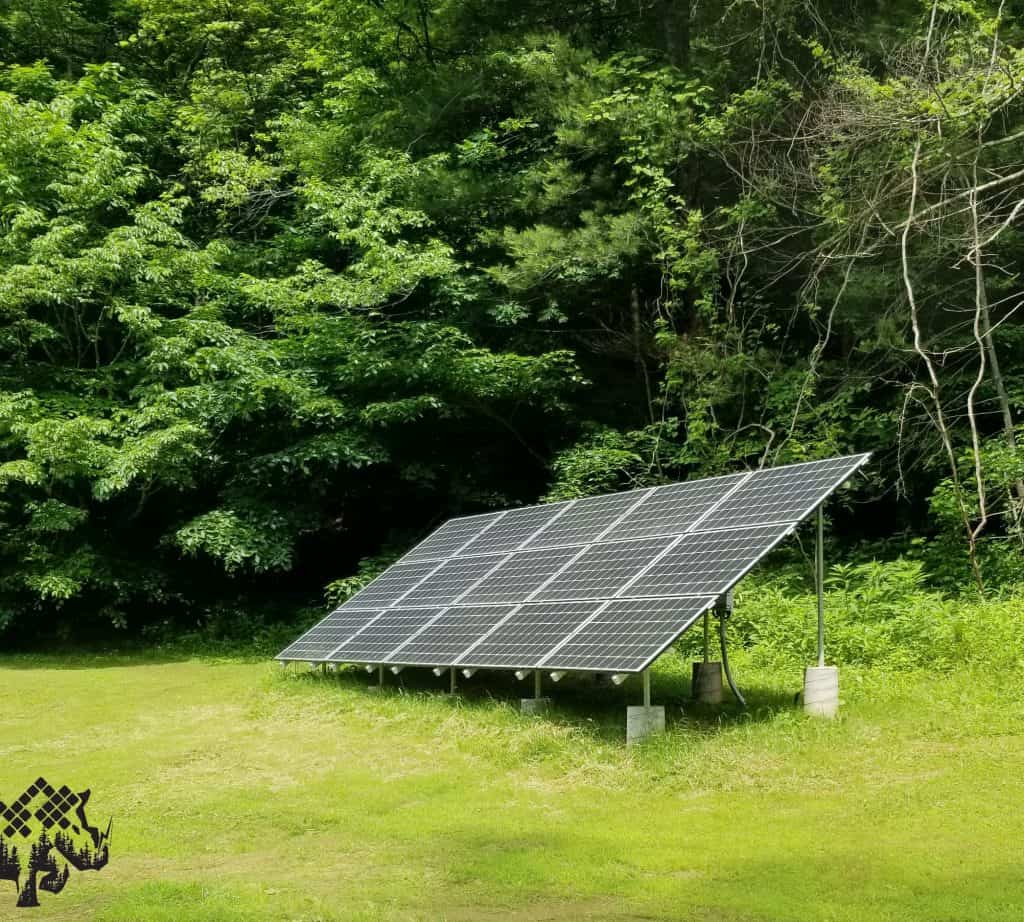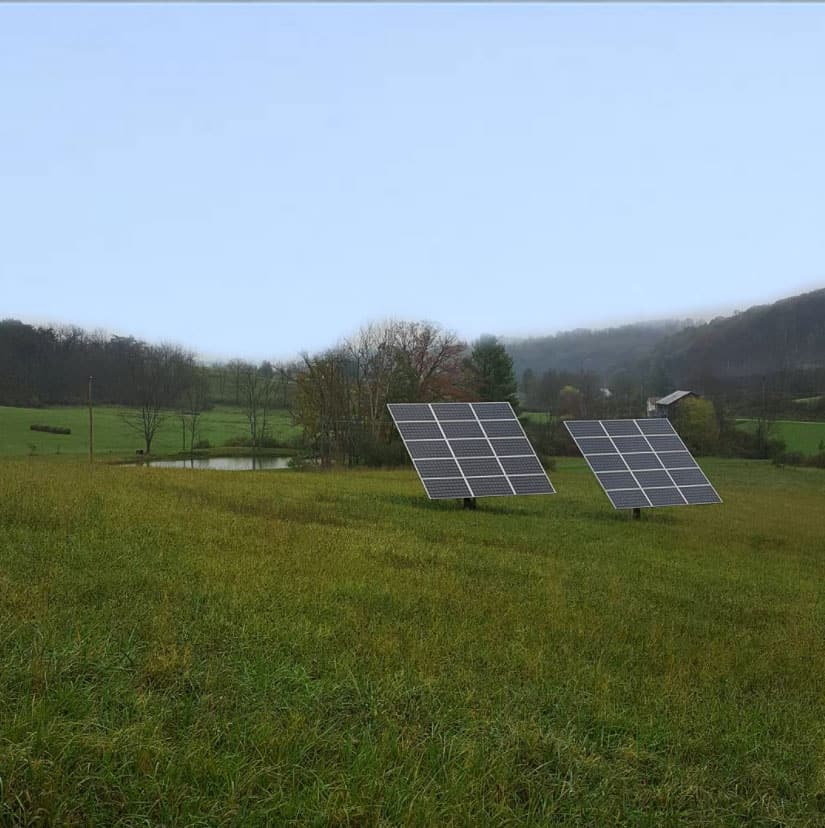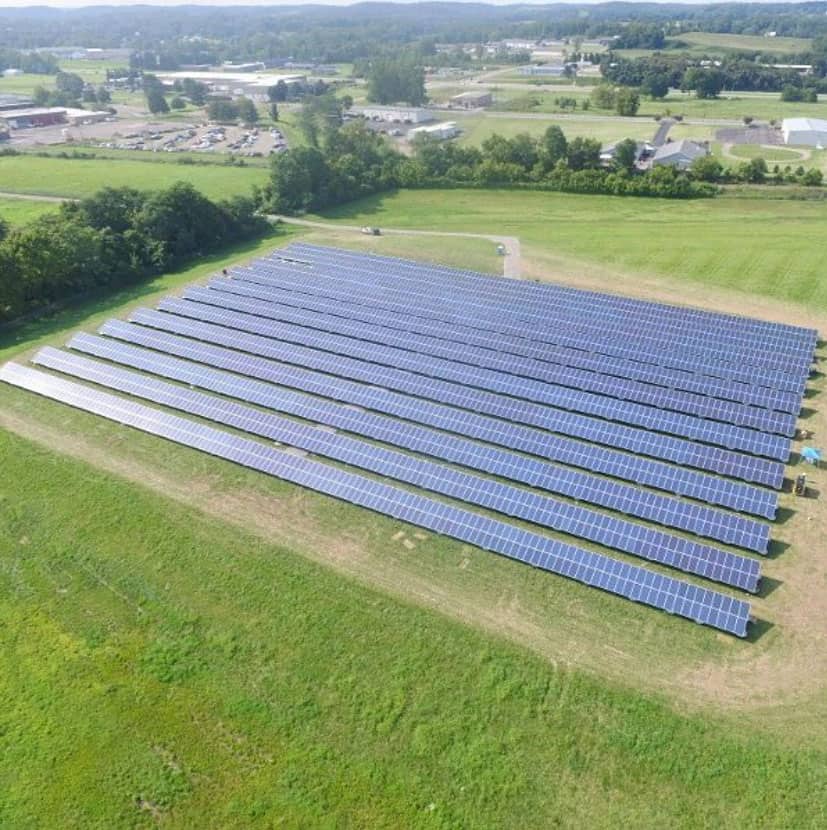Mounting Solar Panels On Ground
/in GeneralWritten by Rachel Vergara
Ground mounted solar panels can be beneficial to the owner based on a few factors including:
- Efficiency Goals
- Amount of space on roof vs land
- Aesthetic preferences
What Are Ground Mounts?
A Ground Mounted Solar System is exactly how it sounds, free standing solar panels that are installed directly into the ground rather than being mounted to the roof. This is generally done when a home does not have enough space on their roof, have large unused land, require more panels to power their home than a roof mounted system alone can provide, or just prefer backyard solar arrays. There are two main types of ground mounted solar panels: Standard Ground-Mounts and Pole-Mounted Solar System.
Standard Ground Mounts
When it comes to standard ground mounted solar arrays, they are a great option for those who may not have viable space on their South facing roofs or have unused large open landscapes with no shade. These systems usually have many rows of panels and require multiple footers, either concrete or auger, attachment points to the ground.
Though there is a good percentage of standard ground mounted solar arrays that are static, they have the ability to use sunlight tracking systems. This allows them to track the course of the sun throughout the day for maximum exposure.
Pole Mounts
In pole mounted systems, solar panels are secured onto a single pole rather than with multiple attachment footers. Pole mounted arrays are usually pricier than ground mounted arrays seeing that they require deeper footer attachments as well as more concrete to be able to support the single pole that will house the panels.
Pole mounts allow for tracking sunlight with more mobility than standard systems since they are able to pivot. Because they allow for easier use of a tracking system, more regular maintenance is required with pole mounts. Pole-mounted solar systems are more aesthetically pleasing and can include artistic designs, such as flowers or tree designs.
As for the requirements to work optimally, Pole Mounted solar systems are very similar to the standard ground mounted systems. They are ideal for large fields with no shade that allows them to produce the most amount of energy.

Standard Ground-Mounts
Pros
- Utilizes large unused and unshaded land
- Usually Cheaper than Pole Mounted Systems
- Uses less concrete than pole mounts
- Ability to track sun throughout the day
Cons
- More susceptible to damage from snowfall and wildlife
- Require more racking
- More robust than pole mounted systems
- Takes up large amount of landscape
Pole-Mounts
Pros
- Mounted up high to maximize exposure to solar energy
- Ability to track Sun throughout the day to provide higher energy production
- Can supplement a roof mounted system
- Requires less racking
- Aesthetically pleasing
Con
- Pricier than its ground mounted counterparts
- Requires more regular maintenance
- May not be suitable for dense environments with lots of trees and buildings
Is This a Good Option for You?
Home/Property Owners:
Farmland is a wide open space, usually with limited structures that have adequate or viable roof space. Therefore farmers must consider using their unused land in order to produce energy. Solar panels appeal to farmers due to their desire to cut or reduce costs associated with running their farm as well as being more environmentally conscious. Some farms want to rely solely on their own power and want alternative ways to connect to the grid as well as using a cheaper option than running a powerline.
Farmers
Farmland is a wide open space, usually with limited structures that have adequate or viable roof space. Therefore farmers must resort to using their land to mount their solar arrays. Solar panels appeal to farmers due to their desire to cut or reduce costs associated with running their farm as well as being more environmentally conscious. Some farms want to rely solely on their own power and want alternative ways to connect to the grid as well as using a cheaper option than running a powerline.
Business Owners
Businesses can benefit from going solar to reduce their manufacturing and operating costs by having large ground mounted solar panels with the ability to support the entire business. Roof space may not be adequate enough to power a large business.
Having solar panels installed may also benefit the marketing aspect of a business by leaning into the appealing green and renewable energy.


Ground Racking Vs. Roof Racking Solar Panels
Still undecided on which solar system fits best for you? Check out the advantages and disadvantages of both ground mounted solar systems and roof mounted solar systems.
Ground Mounting Your Solar Panels
Advantages
Ground mounted panels may fit into your efficiency goals for your panels. These solar systems have the potential to track the sun through the course of the day and are installed at the perfect angle to optimize energy production.
Roof space is oftentimes not optimal for mounting solar panels therefore unused land is utilized by ground mounted solar panels.
Disadvantages
With higher technology, in addition to labor and materials for installation, installing ground mounted systems can get costly. Tracking technology is optional but gives the ground mounted panels the ability to perform to its highest potential. Ground mounted solar panels also take up land that might otherwise be used if the panels were mounted to the roof. Being on the ground also poses a risk of being damaged by wildlife.
Roof Mounting Your Solar Panels
Advantages
As great as ground mounted solar arrays sound, they may not be the best system for a homeowner and their individual goals. Roof mounted panels are, more often than not, cheaper than a backyard solar system due to the fact that they already have a foundation to work with. Roof mounting solar panels utilize unused space on the roof, unlike ground mounts that will take up space in your yard. Because panels are mounted on the roof, they are less likely to be damaged by wildlife.
Disadvantages
There are a few disadvantages that come with mounting panels to the roof. The angle of the roof plays a big factor into the efficiency of panels, therefore if the roof is not at the correct angle based on the latitude of the home then the panels will not operate to their full potential. Some roofs may not be able to support the amount of panels needed to power the home. In addition to these factors, panels may hinder future roof repairs or need to be removed and replaced in order to work on the roof.

